Having run Project TinyMiniMicro for over two years now, one of the biggest requests we have gotten is looking at other PCs outside of the 1L options from Lenovo, HP, and Dell. One of the most requested is the small PCs from ASUS. It took until a few months ago for us to launch the STH Mini PC series, and so models have changed, but we decided to take the newest ASUS PN51-S1 for a spin. We purchased the highest-end AMD Ryzen 7 5700U version barebones and built a cool system out of it with 32GB of memory and 8TB of storage along with the 8-core CPU. This all fits in a very small package and so it was time for a review.
ASUS PN51-S1 Mini PC with AMD Ryzen 7 5700U Background
If you want to see the relative size compared to the Dell OptiPlex Micro 1L PC, that is in the first minute of the associated video. We also have noise testing live so you can hear the fan noise. This unit is fairly quiet, but also folks want to know the tone of fans, and so we wanted to show that as well.
As always, we suggest opening this in its own browser, tab, or app for the best viewing experience.
We purchased the unit for $529 a few weeks ago but it has dropped in price to under $500 at the time this piece is going live. We purchased the barebones AMD Ryzen 7 5700U version which is a low-power 8-core 16-thread processor. For those wondering about the AMD Ryzen 7 5800U and the ASRock 4×4, that is in the queue as well and we have numbers from that system in this review.
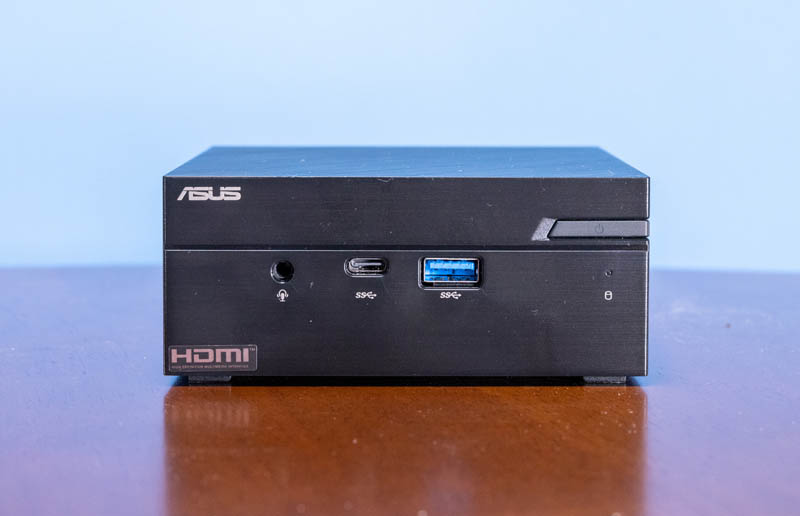
Here is an Amazon affiliate link (we may earn a small commission) to the unit we purchased. Pricing changes, so it is worth looking at what it currently is since we have seen a $70 swing while doing this article. There are also lower-cost options like the 5500U version that cost significantly less (e.g. >20% savings) but we wanted to test the higher-end unit.
We purchased the barebones unit with the intent to add memory and storage. We ended up adding quite a bit of both with 32GB of memory and an 8TB SSD. Many will know that William Harmon who did many reviews for STH over the years left for Sabrent and so I told him we would do a STH Mini PC system with his new products. The 8TB NVMe SSD in this form factor is quite crazy. We reviewed the unit in Sabrent Rocket Q 8TB Review Size Matters and the performance was virtually the same in this system. Also, the 2x 32GB DDR4-3200 SODIMMs worked without issue.
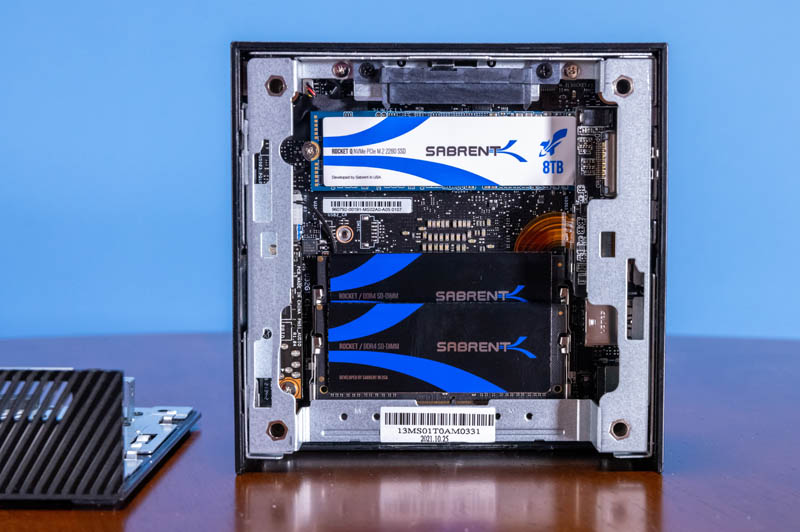
What this unit did not come with was a Windows 10 or Windows 11 license because it was barebones. Some of the listings for the PN51-S1-BB7000XTD make it sound like the system comes with
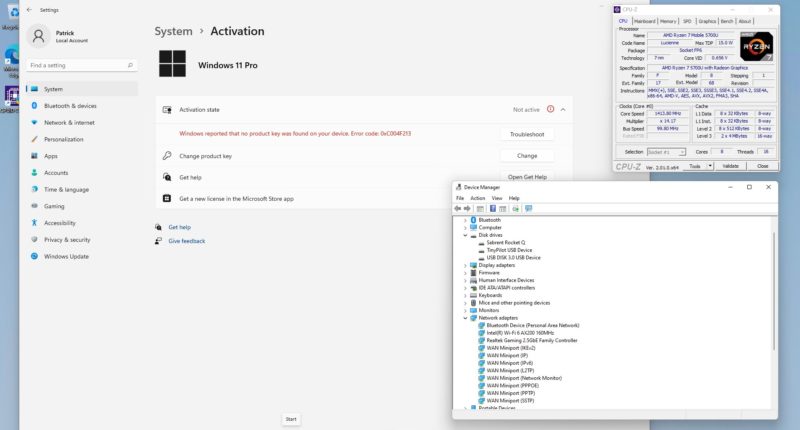
With that, let us get to the hardware.
ASUS PN51-S1 External Hardware Overview
This unit is small. It measures 115mm x 115mm x 49mm making it very small indeed. This is much smaller and lighter than the 1L PCs we look at as part of the Project TinyMiniMicro series.
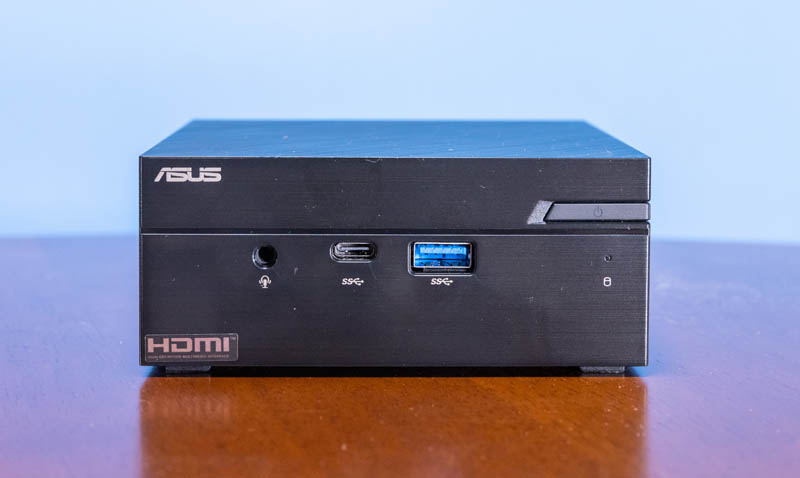
On the front of the system we get a combo headset jack along with two USB 3 ports, one Type-C and one Type-A. There is also the power button and a HDD activity light. On the side of the system, we get what looks like an unlabeled Kennsington lock port.
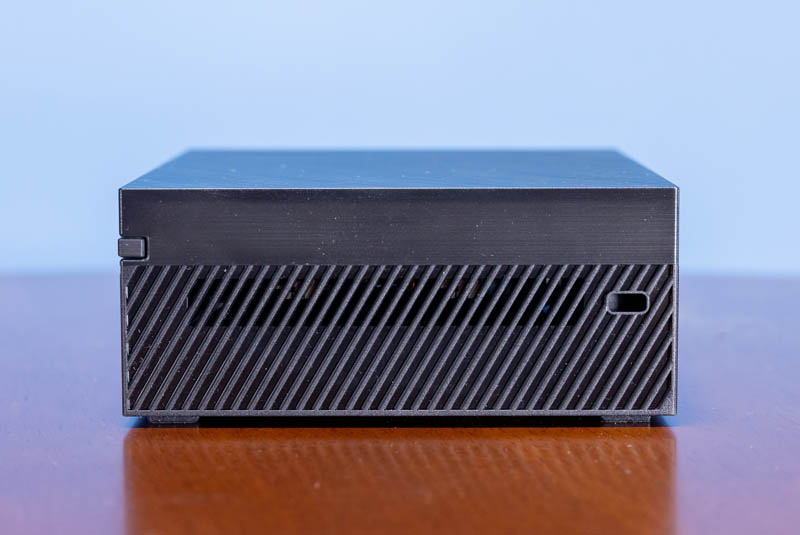
On the other side, we just get vents. We will quickly note that the exterior of this unit is all plastic, but there is an internal metal structure. While the unit is light, the 1L corporate desktop PCs feel more substantial.
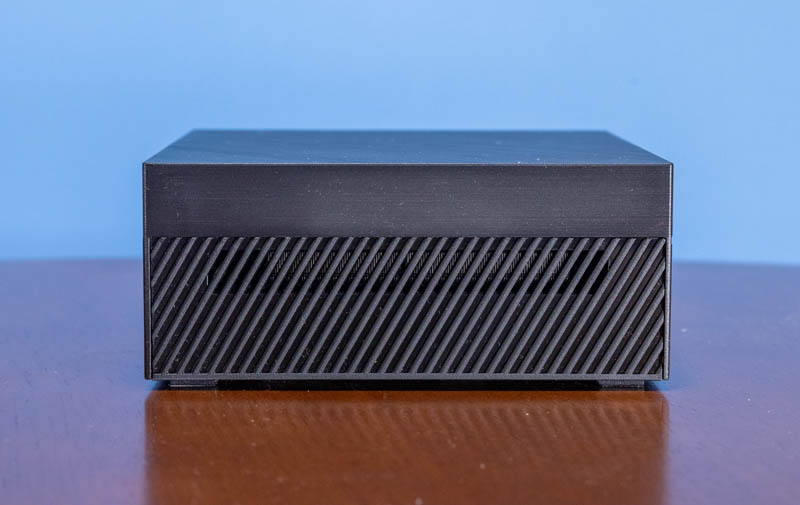
On the rear of the unit, we get a HDMI port as standard. There is then a DisplayPort that is in a configurable slot. Ours had the DisplayPort but this looks like something that ASUS can customize for corporate customers buying these in volume with other display outputs. There is a USB Type-C combo that one can drive a DisplayPort output through with an adapter. There are also two USB 3 Type-A ports and the DC input.
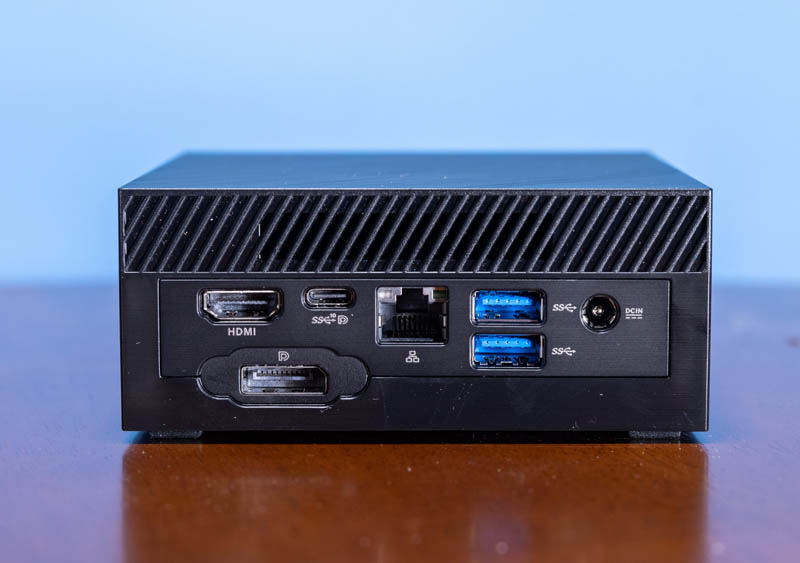
In the middle, one can see a RJ45 port. We have seen forum posts online saying this is 1GbE in this generation. We tested it both at 2.5GbE and 1GbE speeds, and while it runs at the slower 1GbE speeds, it is a 2.5GbE adapter and can run at 2.5Gbps. Here is a Ubuntu screenshot with the Realtek RTL8125:
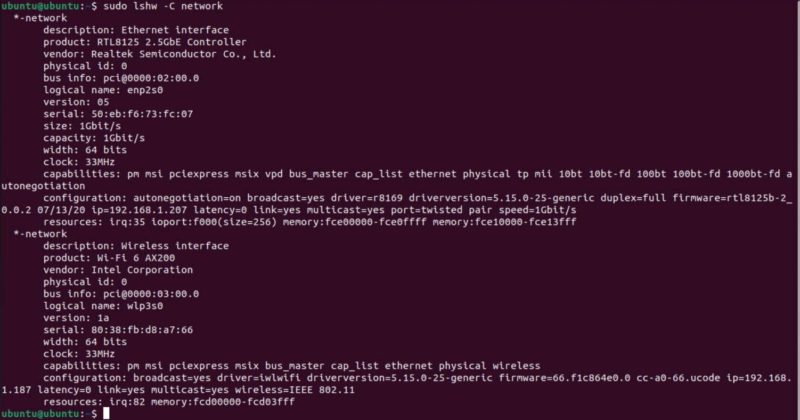
The bottom of the unit has a nice regulatory marking label section as well as a vent. ASUS has mounting options for the unit, but perhaps the most important is that it has screws that are integrated with the rubber feet. Unscrewing those allows access to the interior of the chassis.
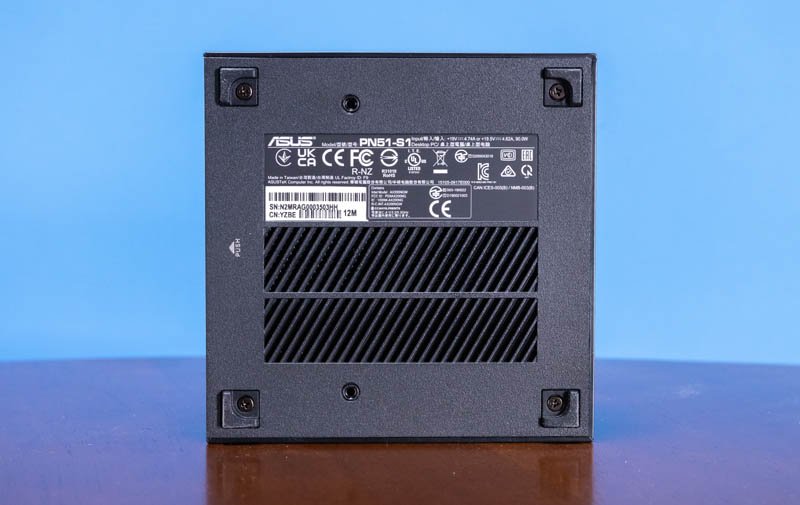
Next, let us get to our internal hardware overview and performance.

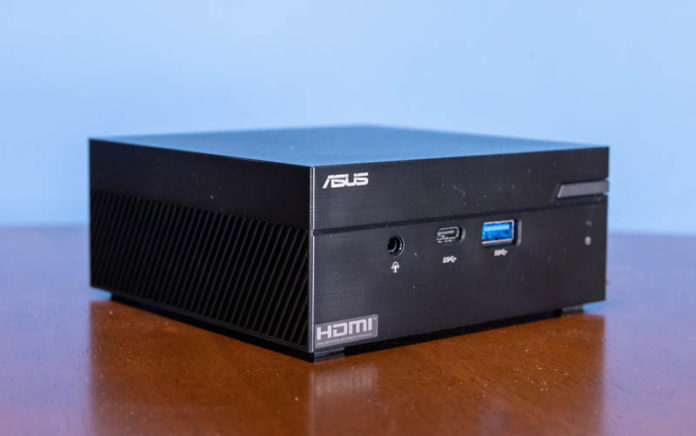



wouldn’t be bad to emphasize the name of processor “under scrutiny” with a different color (blue or inverted white on blue) in the graphs (especially those with two colors, like 7-zip compression)
I have a couple of these running at the moment, one pn51-e1 with 5700u and one pn50 with 4500u, both with 32gb ram and upgraded Intel ax211 wifi6e cards (cheap drop in upgrade).
They’re fantastic if you’re willing to pay the little bit more they ask.
My only issue is windows 11 power management is completely broken (have to bypass it and use Asus own power app, or the old control panel power settings). AATU (apu tuning utility) works well on these if you need more or less power but the fan is not really adjustable and seems to only have a low, medium and high setting, no curve adjustment, no temperature threshold adjustment. So it always swings between dead silent and clearly audible under load at high power settings, no soft ramping of fan speed like other options. The 4500u is usually completely silent in normal office PC use. It’s mainly the 5700u that can get a bit annoying without severely restricting it’s power in AATU. If you let it breathe and wind it up to 40+w you can get benchmark results on par with a 2700X, but it will be screaming at you the whole time.
I have an Akasa Turing A50 fanless case coming to test the 5700u in though. That should be fun to play with.
I’d agree that the general miniPC home tinkerer should go with the minisforum or beelink options though
Asus doesn’t issues security fixes for their PN series (too), therefore I don’t recommend this for business environment.
I own a PN50-1S.
Do you know if this supports ECC RAM? Would be nice to have this as a small server but in this form factor I can imagine the RAM getting toasty which ECC then becomes a saving grace.
I absolutely love my Asus PN51-EB1, (mine with 32 gb RAM + ryzen 7 5700)
BUT, I don’t consider it for “only” being lightweight, I use it for my daily work, I do data enginering, have it many times with the cooler at full, it might be annoying but most of the time is a hanged out process swallowing CPU for no good reason.
I’m running Ubuntu 22, excellent support, with the exception of using the DisplayPort as the linux kernel so far has their own opinion on the my Asus’s DP version.
Another thing to critizise is the fragility of the internal chasis, it doesn’t seem to support many changes or many disassemblies and upgrades, thin aluminium you know, ALSO worth noting the HDMI port is really weak and tiny movements does fuck the interfase…